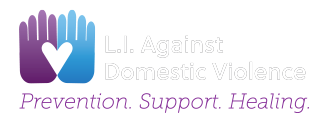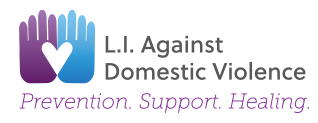Know what to do tostay safe during andafter an abusive relationship
Safety planning is just what it sounds like: creating a plan to keep yourself and any children and/or pets safe while living in an environment of domestic violence and abuse, preparing to leave, leaving, and after leaving an abuser.
A survivor’s safety and well-being is most at risk during episodes of violence and when attempting to leave an abuser, so it’s especially important to prepare ahead of time to be as protected as possible. Developing a plan ahead of another event can be helpful for some victims of domestic violence. A plan may be helpful when it is hard to think clearly in the middle of a crisis. We recognize that each situation is unique, so every safety plan is different. As situations changes, so does a good safety plan.
Here are some ideas that you can consider – strategies that other survivors may have included in their plans. These ideas do not cover every possible scenario and you may find that some may not work for you. It is your decision whether to make a safety plan, and what to include if you do. It may help to speak with someone with expertise in domestic violence. You should also consider where you can safely keep your plan so your abuser does not have access to it.
For assistance in assessing your safety and developing a safety plan please call our 24 hour hotline (631)666-8833 to be directed to an advocate.
Safety strategies to consider
- Talk with people you trust such as friends, family, neighbors and co-workers. Let them know what is happening and talk about ways they might be able to help.
- Consider what you might do to increase safety during an argument or if tension is building. For example, think about where is the safest place in your home. Some survivors include trying to move towards an exit, in the event they need to flee.
- Memorize the numbers you might need to use in an emergency, like 911, a friend’s or family member’s number, or the local hotline. In this digital age, we often rely on our cell phones to store contact information; memorizing numbers can help in the event that the abuser takes your cell phone from you.
- Plan how you would escape if you needed to.
- Consider talking with your children about safety. Some survivors teach their children how to call 911, or talk with them about a neighbor’s home or place in the community that may be a safe place to go in an emergency.
- Prepare an emergency bag. You may want to put together a bag that includes money, copies of house and car keys, medicine, and copies of important papers such as birth certificates, social security cards, immigration documents, court orders, and health insurance information. The bag could also include extra clothes, important phone numbers, or other things you might need if you had to leave your home in a hurry. If you prepare an emergency bag, you may be able to keep it at a trusted friend or family member’s home. It should not be kept where the abuser could find it.
- If you have decided to prepare an emergency bag, have a place in mind where you can safely keep it.
- Click the link to download LIADV’s Personalized Safety Plan. Complete it and keep it in a place where your partner cannot find it.
- It can be helpful to practice your plan for yourself and for your children. Refer to your plan in the event of an emergency, and to help ensure your and your children’s safety while in an abusive relationship, and after leaving the relationship.
Abusers try to control their victims' lives.
When abusers feel a loss of control – like when victims try to leave them – the abuse often gets worse. Take special care when you leave. Keep being careful even after you have left.
Monitoring and feedback
Focused on innovative solutions
Close monitoring and clear evaluation of the projects will allow you to report concrete results back to your stakeholders, while creating a space for reflection to understand what might have gone wrong and whether there is space for improvement.
Strong partnership
Productive cooperation
There is no doubt that productive cooperation between an NGO and a business can be demanding. However, when done right, strong partnerships will bring larger benefits for companies and achieve far more long-term and tangible results for the charity and for wider society.
Strong results
Stakeholders involved
Charityfy work have a lot in common with doing business: goals have to be set and results evaluated. By doing so, you can learn more about what you are achieving and whether there is room for betterment in the delivery of effective and meaningful change.


